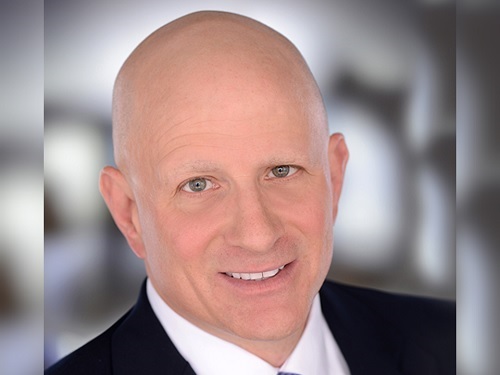

In today’s highly connected and digitized society, being able to tap into global expertise is gold dust for insurance firms. Emerging risks like cyber and tech-related exposures transcend geographies and business sectors; they’re truly all-encompassing and require bespoke and highly granular approaches to underwriting and risk management.
To better respond to emerging risks, RSG Underwriting Managers (RSGUM) recently combined two of its highly specialized underwriting teams: US-based ThinkRisk Underwriting, and London, UK-based EmergIn Risk. Combined together under the EmergIn Risk brand, with headquarters in New York and continued operations in London, the two teams provide deeper underwriting expertise, broader jurisdictional capabilities and new, innovative, emerging products for clients across a wide range of industry sectors.
ThinkRisk Underwriting was a New York based MGU that was formed in early 2010 and was the first insurance entity that Patrick Ryan created after founding Ryan Specialty Group (RSG) in 2010. ThinkRisk had one product at the time, branded “Converging Risk,” which was designed to address the convergence of media, tech, E&O and privacy-related exposures under one modular policy that was sold primarily through wholesale brokers in the US. Converging Risk remains part of the family of products offered by the combined EmergIn Risk operations today.
Upon its formation in 2016, EmergIn Risk was created as a London-based MGU specializing in enterprise-wide solutions for cyber, tech, media and other specialized professional liability lines. It covers global risks for international enterprises of varying sector, size and overall complexity in a range of industries, including but not limited to: aviation, energy, construction, healthcare, hospitality, manufacturing and retail. EmergIn’s strategy has been and continues to be to “dissect clients, identify how they use technology, and identify how that technology ultimately leaves them exposed,” explained EmergIn Risk president Jamie Bouloux (pictured immediately below). “We’re all about creating bespoke solutions that meet the specific needs of an industry,” he added.

Both ThinkRisk and EmergIn were strong market entities in their own right, so what drove RSGUM’s decision to combine the two MGUs? Ultimately, the decision came down to scalability, explained Bouloux. The two firms were implementing similar strategies and targeting similar goals, which were delineated only by geography.
“EmergIn Risk was based in the UK but had a significant book of US-based risks, whereas ThinkRisk had only US-based risks and no global underwriting capabilities,” explained Reza Khan (pictured below), who was formerly CEO and president of ThinkRisk prior to the consolidation of its operations with EmergIn Risk, and now serves as CEO of EmergIn Risk. “At ThinkRisk, we were generally focused on SME business, particularly in the cyber and tech/MPL E&O space. We had a broad appetite in terms of eligible industry classes, but we weren’t doing what EmergIn Risk was doing in terms of bespoke underwriting and crafting personalized solutions for more sophisticated buyers to address their unique exposures.
“EmergIn Risk announced plans to enter the SME space in Europe, and that move was essentially the genesis of our collaboration. They were building a portal to service SME clients in the UK and abroad, while ThinkRisk was simultaneously building an SME portal for the US. There was a lot of replication, and the question from an RSGUM perspective became: why recreate an SME strategy in Europe when we already have an existing one that was already working well in the US? It made sense to be more cohesive in our business strategy in order to globalize our solutions.”

The MGU will continue to distribute its products via the same distribution channels and broker relationships that it had before the combination. However, they also plan to build partnerships with affinity groups and associations that represent homogenous businesses or practitioners, and they will build bespoke risk management, educational and concierge services around the unique exposures of those particular clients.
“Another great element behind this collaboration is globalization,” Bouloux told Insurance Business. “Today’s brokers are having to identify and manage global risks, even with SME and mid-market companies. If you take the e-commerce sector as an example, there are lots of mid-market and small retailers in the US that might unwittingly have an exposure to GDPR because they transact credit cards of European data subjects. The broking community in the US is absolutely on top of US regulation, but questions remain as to whether there’s a real focus on what global regulation is looking like. Combining ThinkRisk and EmergIn Risk provides that global outlook for our clients.
“The broker clients with whom we’ll continue to have real success are those that have clients with global footprints, or clients with real exposure to not just US regulation but also other regulations from jurisdictions around the world. Moving forward, we will keep our existing distribution channels open. The question for potential broker clients is: do you have clients who might benefit from having access to a smaller, niche, global MGU that has particular expertise around the exposures of being an enterprise with a global footprint? That’s where we can really bring value.”
Transactional cyber, media and various classes of E&O insurance are going to remain at the core of EmergIn Risk’s product offering going forward. However, as a part of its new SME strategy, the MGU is looking at 45 different industries and developing products and services that address the unique exposures of each sector. This is quite a complex challenge, considering the different uses of technology within industry today, explained Bouloux.
“Given the increasingly intense competition, particularly in the cyber market, we must find ways to differentiate not only our product offerings, but also by identifying altogether new distribution relationships. Then we need to offer tailored risk management services to clients and their insureds with the goal of making them better educated and less vulnerable risks. In turn, this added value will hopefully make them less likely to be commodity buyers,” commented Khan.
